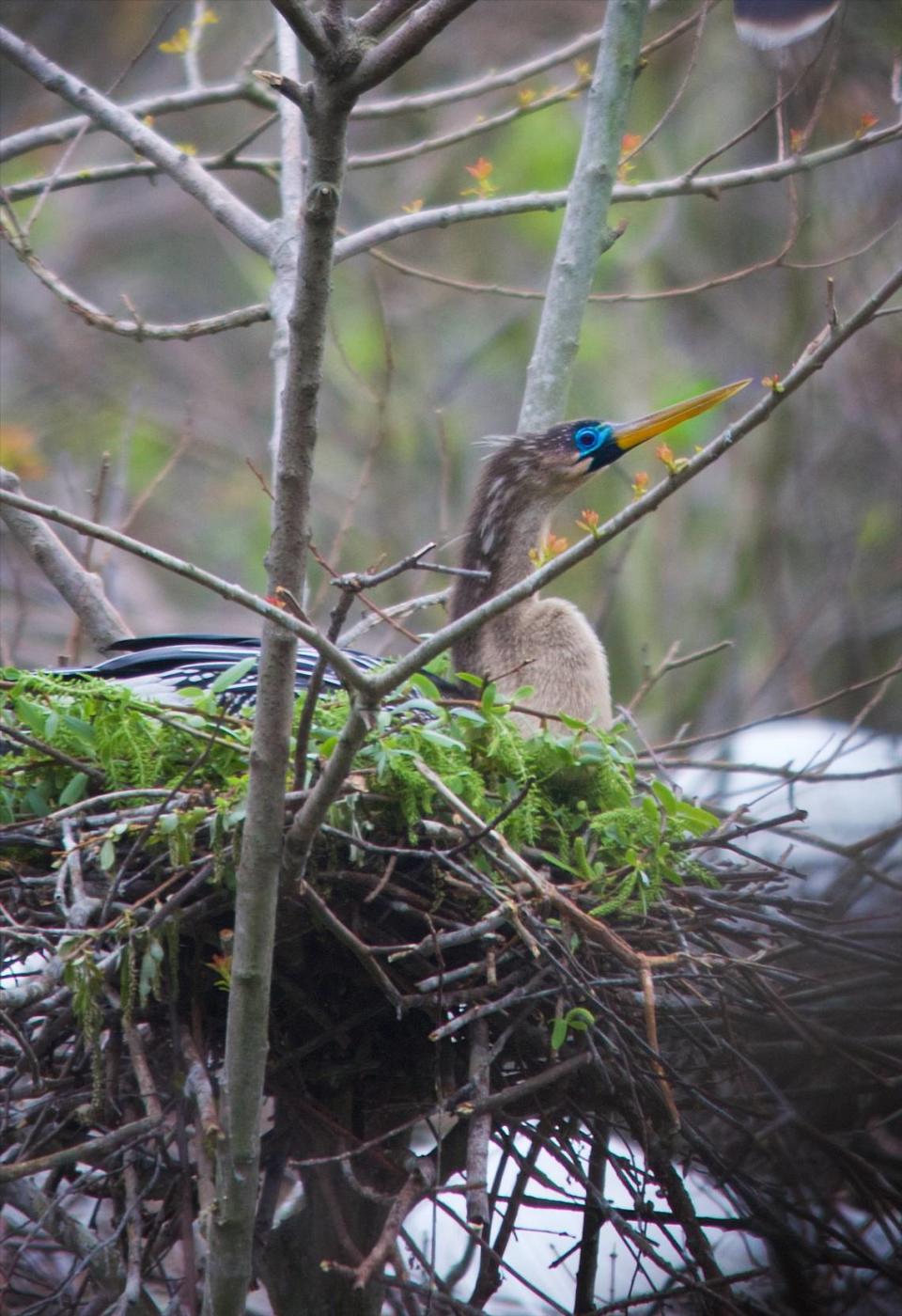This SC ‘devil bird’ impales fish before eating them. Here’s how to spot them
Commonly found in the coastal region of South Carolina Lowcountry, anhingas can be a common sight to see near any neighboring pond or lagoon.
Does the name ‘anhinga’ not quite ring a bell? This bird has a couple of nicknames that you may recognize.
Frequently called snakebirds, the anhinga (Anhinga anhinga) acquired this moniker from its appearance of their long neck and slender frame as they swim through the water with their heads barely peeking above the surface.
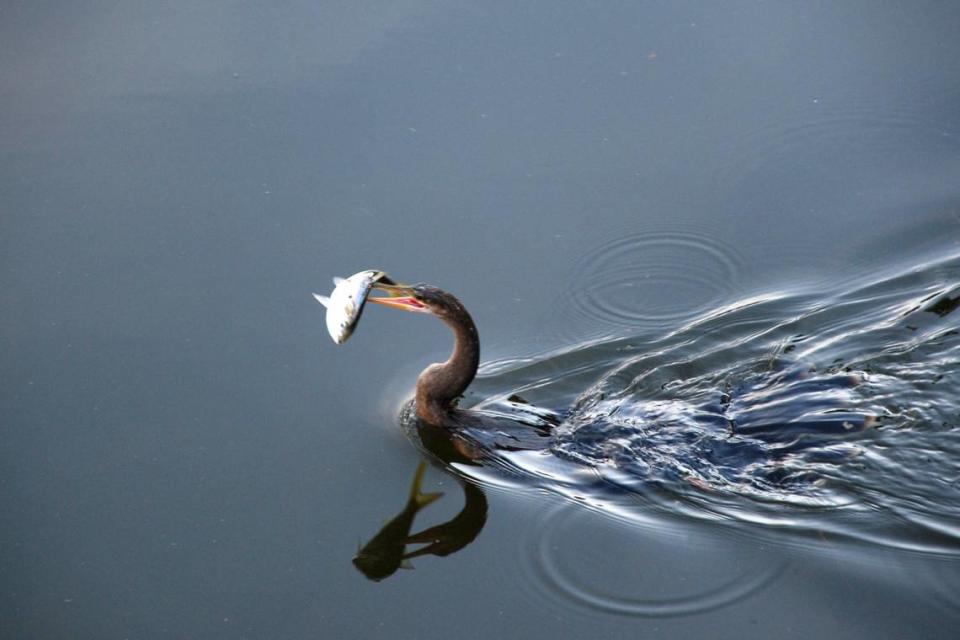
In addition, the name anhinga comes from the Tupi Indian tribe in Brazil, meaning “devil bird” or “evil spirit of the woods,” said Kay Grinnell, the president for Hilton Head Audubon.
Other nicknames for this bird include the term ‘water turkey,’ due to the shape of its tail as well as darters or the American Darter.
What is an anhinga?
Anhingas are warm-climate birds that keep to the southern U.S. as well as parts of Mexico and South America.
In South Carolina, they will mainly be found along the coast, predominantly in the Lowcountry region.
These birds have spear-like bills, long S-shaped necks and look like a flying cross when they are in flight.
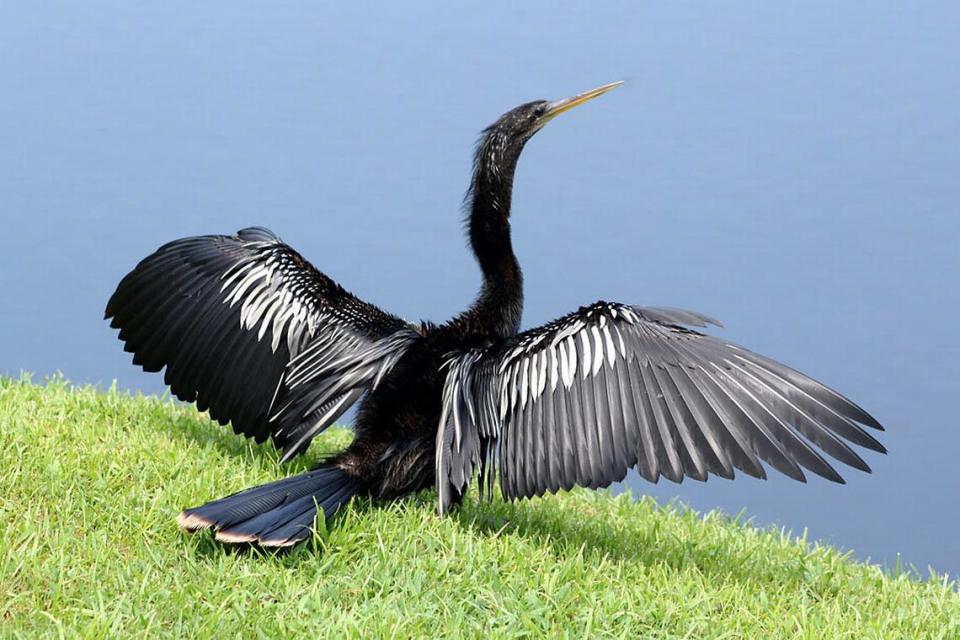
Adult male anhingas are overall black in color with silvery-white streaks on the back and wings. Adult females have a pale tan or reddish-bown head and neck. Young anhingas will look much like an adult female until they reach adulthood themselves. Then, they will grow into their regular plumage, detailed Grinnell. For both male and female anhingas, the bill is yellowish-orange in color.
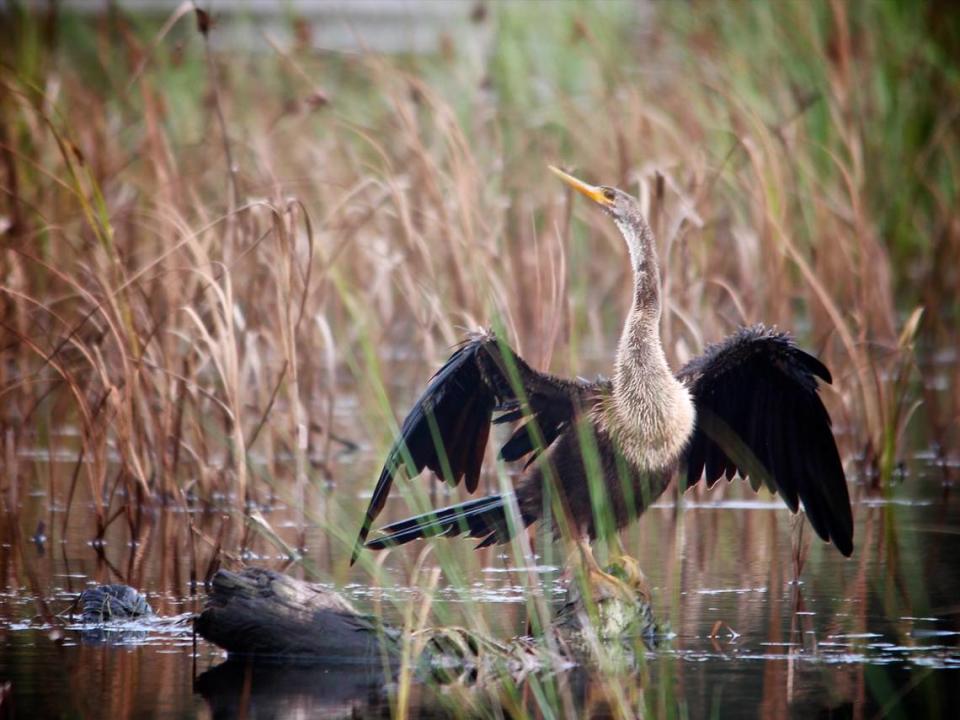
In addition, unlike most waterbirds, anhingas do not have waterproof feathers and have much denser bones than most other bird species. These dense bones and ability to attain wet feathers helps these birds to slowly submerge their bodies under the water to stalk their prey, Grinnell said.
They prefer shallow bodies of water, which include ponds, lagoons, streams and lakes.
Although you may see them year-round, anhingas will migrate south if the weather gets uncomfortably cold during the winter months.
What and how do adult anhingas eat?
Anhingas primarily consume small or medium-sized fish within their habitat. In addition, they will occasionally dine on local aquatic insects, crawfish, shrimp or crabs, Grinnell said.
These birds will hunt for fish while swimming underwater or at the surface.
Once a fish nears an anhinga, they will impale their prey with a quick thrust of their long, spear-like bill.
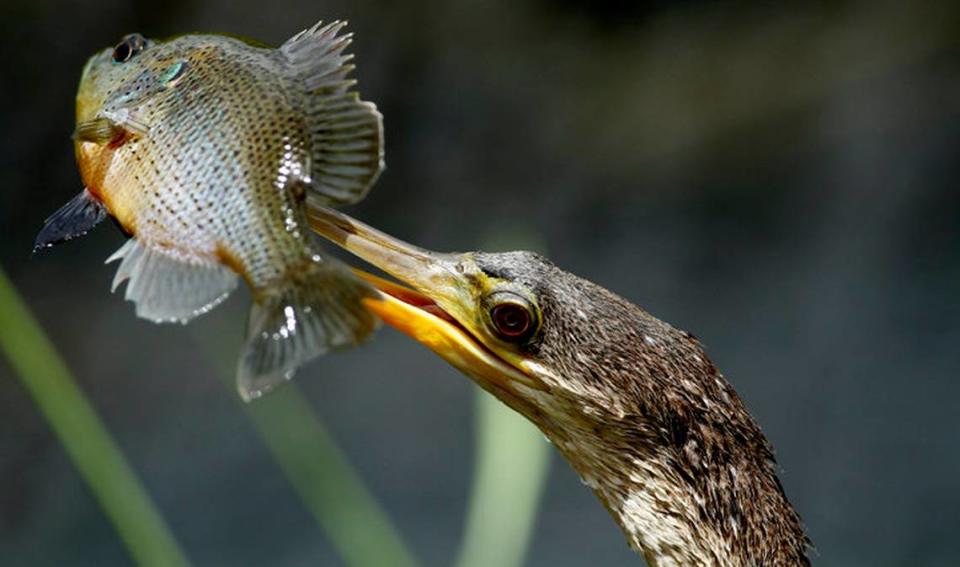
Why do they stand still with their wings stretched out?
When you see anhingas perched beside a pond or lagoon with their wings outstretched, this is them sunning themselves.
These birds will spread out and extend their wings to sun themselves and will generally keep their backs to the sun. This dries out their plumage and absorbs heat from the sun, Grinnell said.
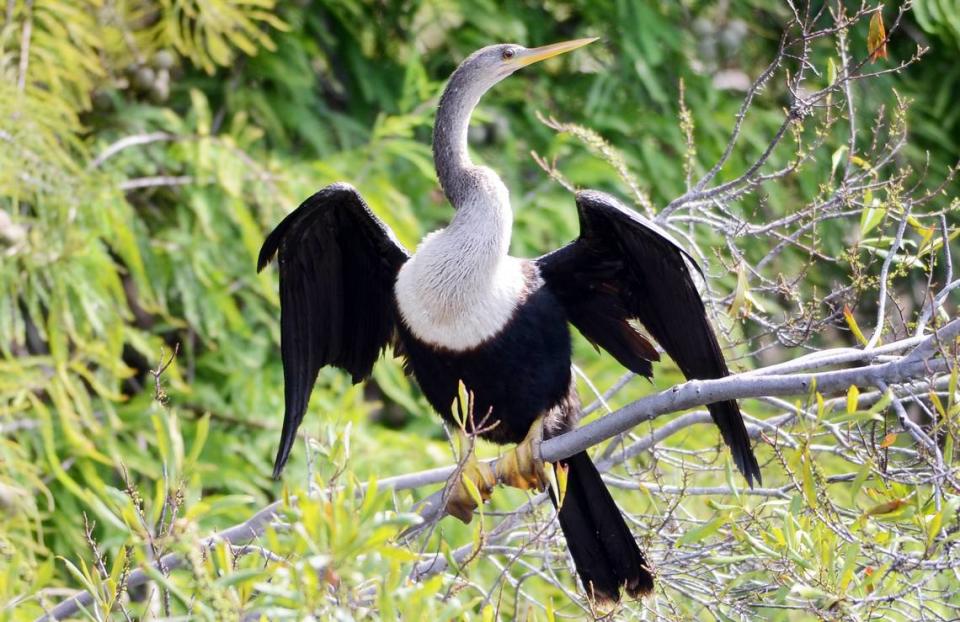
Do they have a breeding season?
In South Carolina, the anhinga’s breeding season is generally between April and May, but may even begin as early as March. They will only have one brood during the year.
Anhingas are social colonial nesters and will typically breed around freshwater colonies, which will often be near the nesting sights of other waterbirds including egrets, herons and ibises, according to Grinnell.
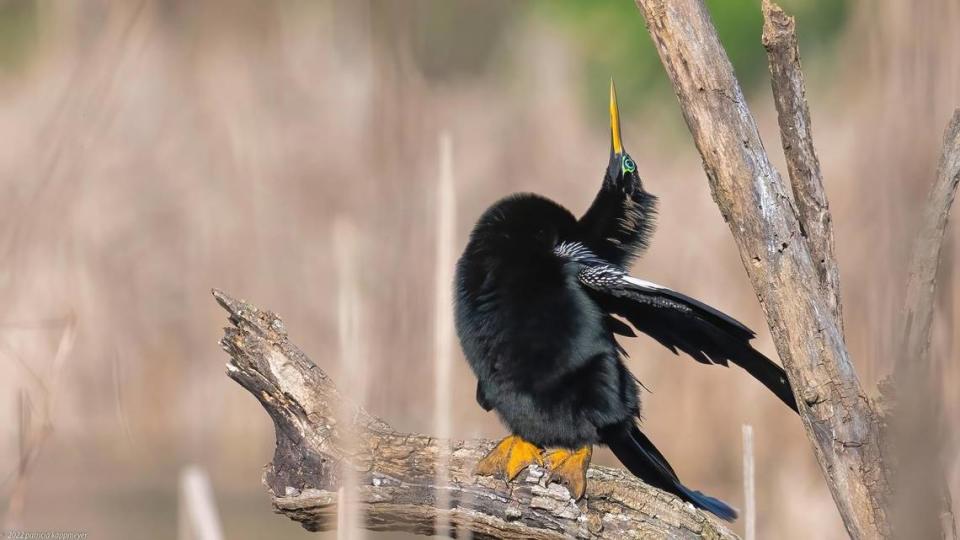
The males will begin constructing the nest and will gather the necessary nesting materials. After they have attracted their mate, the females will finish constructing the nest by weaving the remaining materials together. However, occasionally a mating pair will commandeer another bird’s nest. If that nest contained eggs from the nest’s previous owners, those eggs will be ejected, she said.
Females will lay a clutch size of about two to five eggs, which range from whitish to pale blue in color.
Anhinga eggs will incubate for approximately 25-30 days, with both male and female taking turns, and nestlings will hatch in two to three-day intervals. After hatching, the young are featherless, exposed and dependent on their parents.
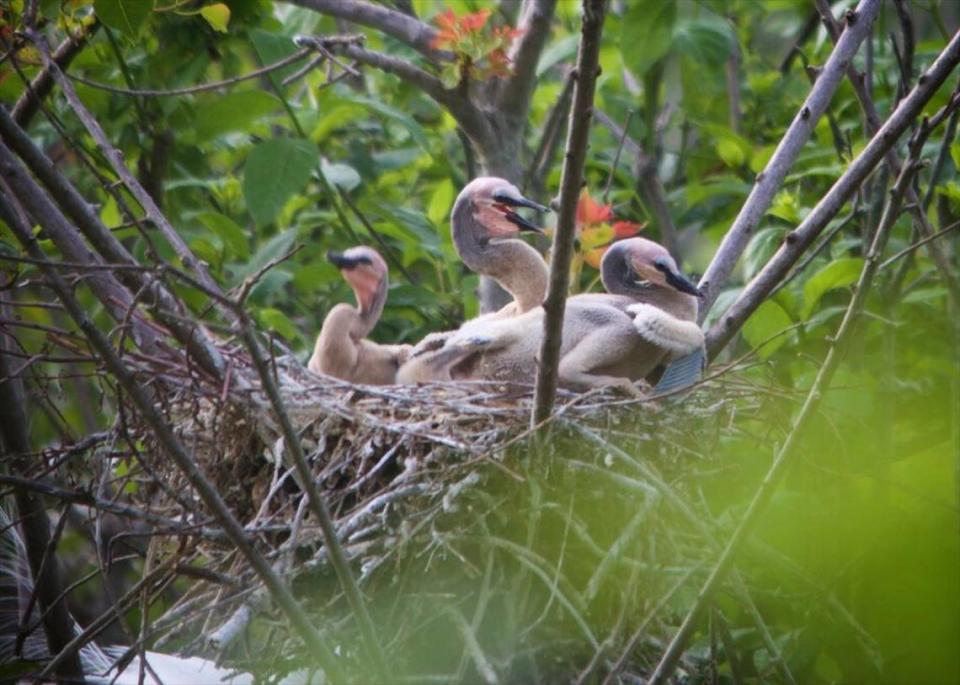
Initially, both parents will feed the hatchlings by dripping regurgitated previously digested food from down their throats. Later, as the chicks become older, they will reach for their food, which is inside their parents beaks, Grinnell said of the young’s early feeding patterns.
The young anhingas will stay with their nests and parents for several more weeks before they are capable of being fully independent.
